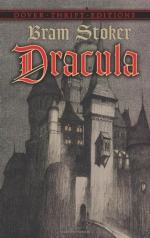|
This section contains 9,677 words (approx. 33 pages at 300 words per page) |

|
SOURCE: Johnson, Alan P. “‘Dual Life’: The Status of Women in Stoker's Dracula.” In Sexuality and Victorian Literature, edited by Don Richard Cox, pp. 20-39. Knoxville: University of Tennessee Press, 1984.
In the following essay, Johnson explores the depiction of women in Dracula, contending that the novel “presents an incisive and sympathetic analysis of the frustration felt by women in late-nineteenth-century Britain.”
Leonard Wolf has described exactly the theme in Bram Stoker's Dracula (1897) which seems to account for the novel's widespread and persistent appeal: “energy without grace, power without responsibility.”1 “Dracula is considerably more,” Wolf points out, “than a sexual danger. Stoker insists on his brooding, primordial animality—he is antirational, childlike, instinctual,” and, “in Christian terms he is a creature cut off from God because, for the sake of breath and motion, he has abjured salvation.” A rebel against the limits of mortal life, Dracula is “a hero...
|
This section contains 9,677 words (approx. 33 pages at 300 words per page) |

|


